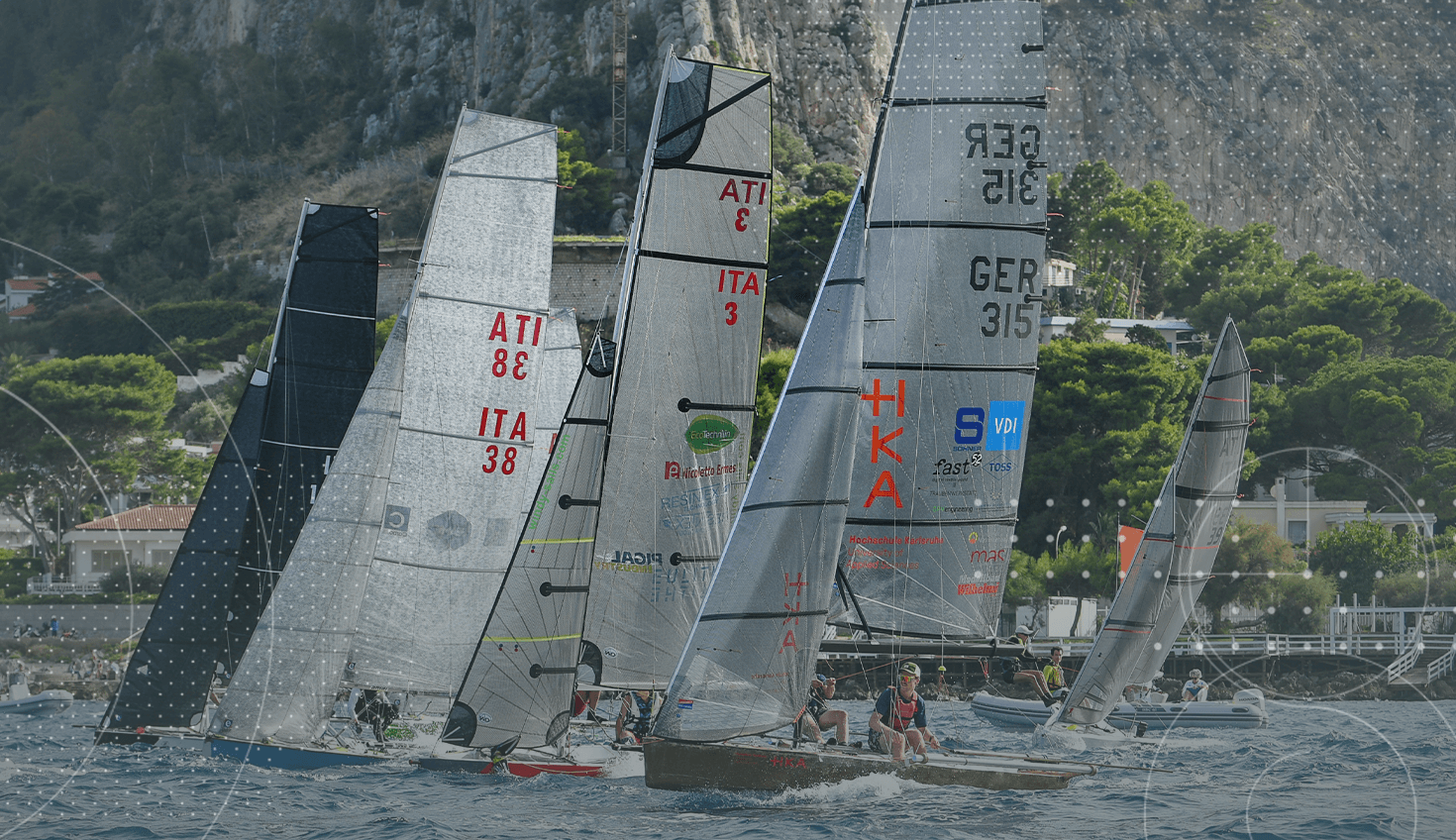Picture the college experience. What do you see? Crowded lecture halls. Expensive textbooks. Studying until 2 a.m. College sporting events, school spirit, and ivy-covered brick buildings.
What about designing a sailboat for an international race?
Since 2017, engineering students at Karlsruhe University of Applied Sciences in Germany have participated in the 1001VELAcup, an annual regatta that takes place off the beaches of Italy.
The multiple-day contest pits students from Italy, Germany, Sweden, and elsewhere against one another in a battle for the fastest and lightest sailboat. The caveat? The boat has to be made up of 70% natural material, has to be designed from scratch, and be self-manufactured – all within budget and on deadline.
It’s the perfect challenge to get hands-on experience for undergraduates studying to become engineers in a country that is known for its robust manufacturing sectors. They’ll be able to build their skills using professional-level CAD platforms and learn how to work on a large team.
Dr. Fahmi Bellalouna, a professor for computer integrated product engineering and mechanical engineering at Karlsruhe University of Applied Sciences, knows how important it is for students to get that kind of experience and has been guiding the ecosail Karlsruhe team through the design and construction process leading up to the regatta.
The project-based learning approach gives students the chance to apply theories they’ve learned in classroom lectures into practice, Bellalouna said, and gives them experience with project management.
By graduation, students will have at least one year of real-world industry experience, bolstered by the university’s dual study programs with leading manufacturers, and projects like the 1001VELAcup competition.
Members of the ecosail Karlsruhe team work on the hull before the 2021 contest. Courtesy: Salvatore Lopez
Navigating the Choppy Seas of CAD Platforms
Before their fourth year participating in the regatta, students faced an ongoing challenge: Leveraging the right CAD platform to design and complete the project.
In the past, Bellalouna said, students encountered issues with sharing information, working together, finding the correct data, and version control errors. He tried different CAD systems to keep part files organized to no avail. Nothing provided assurance they were working on the most current model of a part.
Bellalouna asked himself, how can 30 students divided into six groups work together on 120 different parts that make up one boat?
“That is the main challenge of this project,” he said.
To solve for this, he said, students would need the most up-to-date information before working on their assigned parts and, by the end, would need to make sure every part in the assembly would fit together. In other words, he needed a cloud-native solution.
Onshape solves this problem because students can see each other’s work, design simultaneously, assign new tasks in the same document, and communicate in real-time. Students can also experiment with new ideas with Onshape’s versioning and branching capabilities, allowing them to design fearlessly.
So, “it was very important for us to have one CAD application with integrated PDM functionalities for version management,” he added.
Plus, with Onshape’s cloud-native CAD platform, students are able to access their work from anywhere on any device with a web-browser.
“We don't need any high-performance hardware because we are using a web-based solution,” Bellalouna said.
The team’s sailboat model was designed using Onshape. Courtesy: Professor Bellalouna
A Cloud-Native CAD Solution for Students and Educators
When Bellalouna began teaching at the university in 2015, he brought in 10 years of work experience from the automotive industry, including at Mercedes Benz, where he integrated digital tools like CAD and PDM to improve design processes.
Students gain from his experience important insights into real-world applications of the methods they’re learning. With Onshape’s flexibility and accessibility, Bellalouna can share his know-how with ease.
“I can open Onshape online and see the progress,” he said. “If I see some problems or some issue, I can then contact the student directly, and leave specific feedback on their Document to give them some advice on how to solve their problems.”
The Onshape Learning Center also serves him and his students by flattening the learning curve. The Learning Center offers basic courses on Onshape that help students build up knowledge of the fundamentals of CAD.
“It has all the necessary information to get started with the application without any help from any experts,” he said. “I give students the link to the Learning Center say, ‘Please do the first tutorial and try to learn by doing.’”
Bellalouna, second from right, is presented with the Innovation Award. Courtesy: Salvatore Lopez
Innovate by Leveraging Cloud-Native Solutions
For this year’s 1001VELAcup in Palermo, Italy, the ecosail Karlsruhe team focused on improving their boat’s speed and decreasing its weight.
Teams evaluate previous sailboat models to continually improve a design, as well as find new ways to save money on materials. This year, the team worked to improve the foil to reduce contact between the boat and the water, which, in effect, lowers resistance and increases speed “up to five times the normal speed,” Bellalouna said.
This year, 30 members of the ecosail Karlsruhe team competed in the race with two boats. Both made the finish line despite experiencing harsh sea conditions and technical issues. In the end, the team took home the innovation prize for their Hydrofoil System.
Take a look at one of the boats in action in the video below.
Interested in joining Onshape for Education? Get started today!
